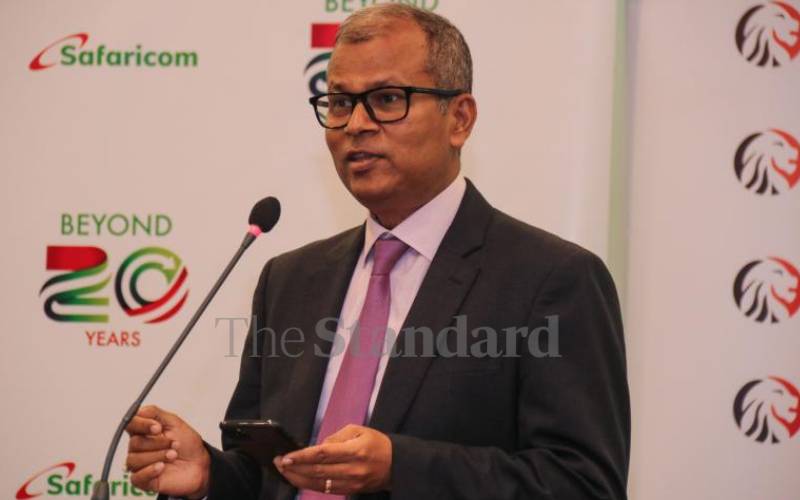Safaricom Chief Finance Officer Dilip Pal. [Wilberforce Okwiri, Standard] A weak shilling added Sh1.1 billion to Safaricom’s debt servicing burden in the six months to September this year, the telco has said.
The new development highlights the impact of foreign currency borrowing to finance the company’s planned entry into Ethiopia.
Safaricom , which tapped $400 million (Sh44.94 billion) to support the payment of licence fees to Ethiopian authorities, says the weakening of the local currency led to the rise in finance costs.
Its finance costs – interest and other charges involved in repaying borrowed money – jumped 12.6 times from Sh236.3 million to Sh2.98 billion in the review period. READ MORE
Safaricom Chief Finance Officer Dilip Pal said in a recent conference call with financial analysts to discuss the telco’s half-year earnings that currency losses accounted for Sh1.1 billion of the rise in finance cost, while the rest was as a result of increased borrowing.
“In finance cost, there is around Sh1.1 billion as currency losses as part of this. The rest is an increase in interest cost because of the bridge loan that we have taken for funding Ethiopia,” he said.
The rise in finance costs came on the back of Safaricom tapping the Sh44.94 billion loan that sent its total borrowings to Sh76.9 billion – 5.2 times the Sh14.7 billion it borrowed in a similar period last year.
The foreign exchange losses came at a time when the shilling lost 1.04 units or 0.97 per cent to the dollar.
The local currency averaged 108.48 units to the dollar in the nine months to September 2021 compared to 107.44 in a similar period last year.
The shilling continues to be battered in the wake of the reopening of the economy and increased dollar demand from importers. It opened yesterday’s trading at another low of 112.38.
Safaricom said the $400 million was a one-year bridge loan but it now wants to term out the facility through a long-term debt arrangement so as to manage working capital and minimise currency risk for the dollar loan.Mr Pal told the analysts he could not disclose the terms of the loan and the institution that financed it.“We scanned the market and then we went ahead with the most competitive bid we got. It was on very competitive terms that we got the bridge loan,” he said.“We deal with quite a few core banks, so we used one of them as a […]
